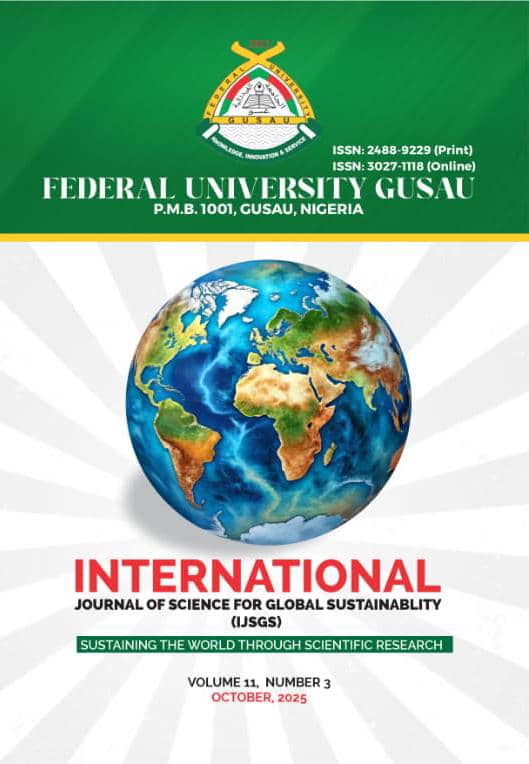Phytochemical, Antibacterial and Characterization of 9-methoxy-12-phenyl-dodec-10-enoic acid-3,4,5-trihydroxy-6-methyl-tetrahydropyran-2-ylester Isolated from Acacia macrostachya leaves
DOI:
https://doi.org/10.57233/ijsgs.v11i3.925Keywords:
Acacia macrostachya, Anti-bacteria, isolation, characterization, extractAbstract
Acacia macrostachya is plant usually a tree belong to family Mimosaceae (Fabaceae), it is popularly known as “Gardaye” in Hausa Language (Sokoto). A. macrostachya is one of such useful plants in African traditional medicine. It is used to treat numerous diseases such as malaria with convulsion, diarrhea, inflammatory diseases, snake bite, anti-diabetic, and cancer among others. The aim of this research is conduct phytochemical screening; antibacterial studies of Acacia macrostachya leaves and characterizes the isolated compound from A macrostachya leaves. The plant were collected from “Lungu” bush in Shagari local government area 12°38′N 5°0′E and authenticated at herbarium Department of Pharmacognosy and Ethnopharmacy Faculty of Pharmaceutical Sciences, Usmanu Danfodiyo University, Sokoto, Nigeria with Voucher number PCG/UDUS/Faba/0016. One kilogram of the powdered plant materials was methanol which gave the extract yields of 131.72g (13.17%). The phytochemical screening reveals the presence of alkaloids, steroids, flavonoids, cardiac glycosides, tannins, saponins, carbohydrate and phenolics. Antibacterial effects on the extracts at various concentration (200 mg/cm3, 100 mg/cm3, 50 mg/cm3 and 25 mg/cm3, against S. Typhi, S. dysenterae, E. coli, P. aeruginosa were studied. The extract was then subjected to column chromatography which leads to the isolation of compound UGP2. The isolated compound was characterized using FTIR, and Nmr. The study showed that A. macrostachya leaves have medicinal potential which could help in the treatment of bacterial infections that affect human and animal respectively.
Downloads
Published
How to Cite
Issue
Section
License
Copyright (c) 2025 Author(s)

This work is licensed under a Creative Commons Attribution 4.0 International License.












